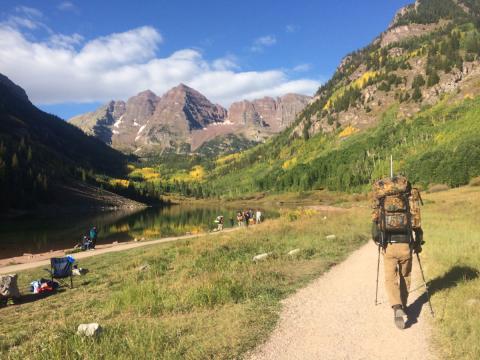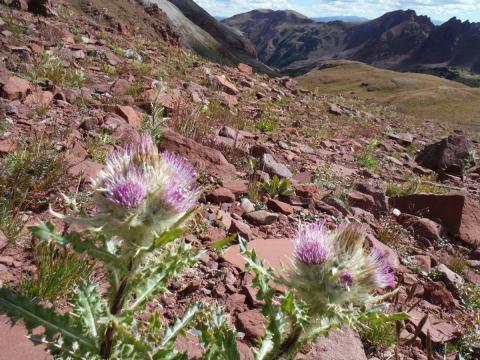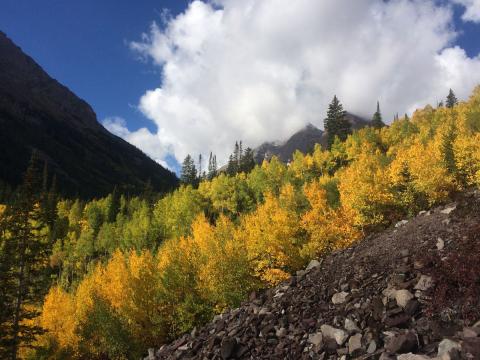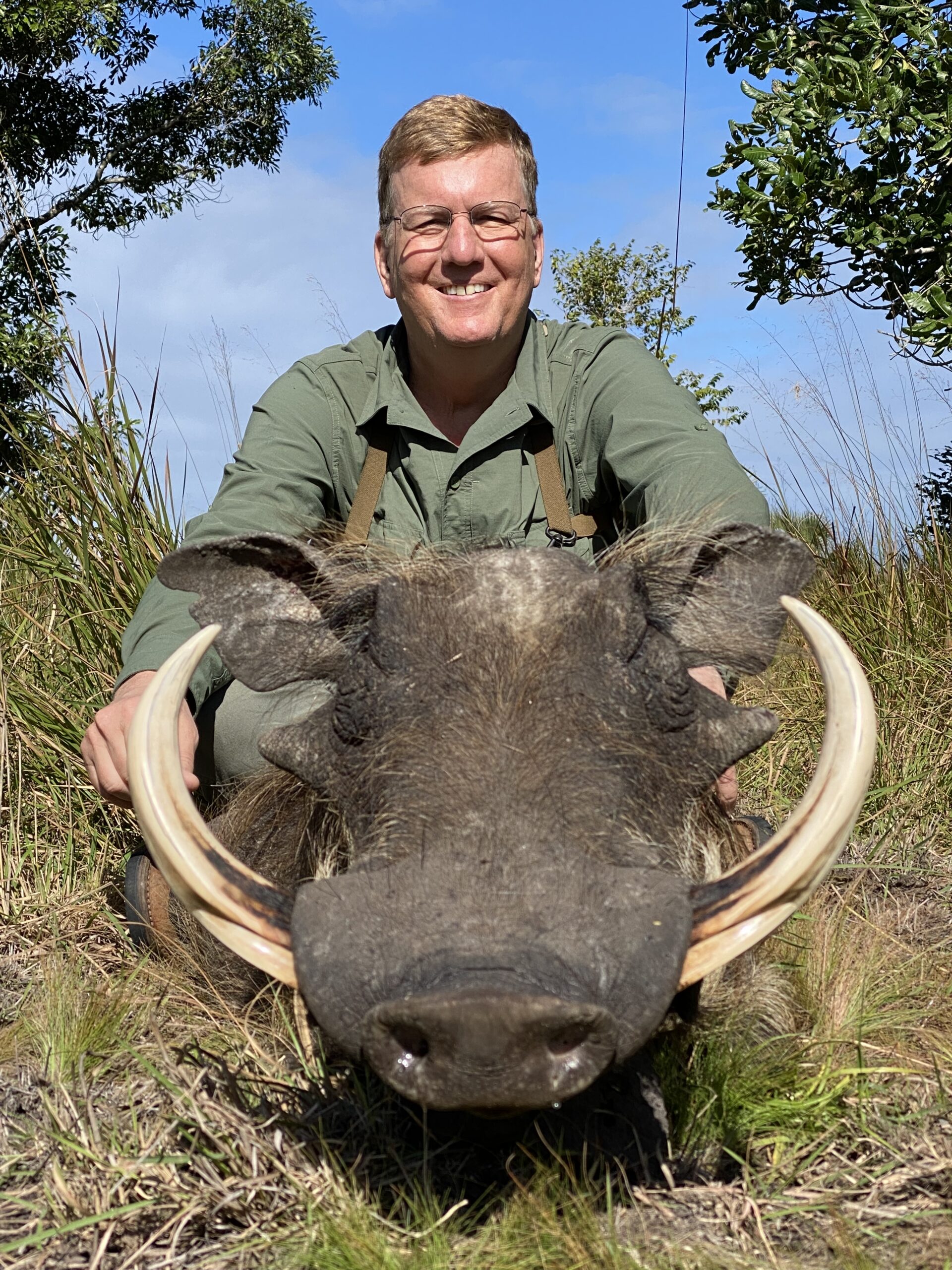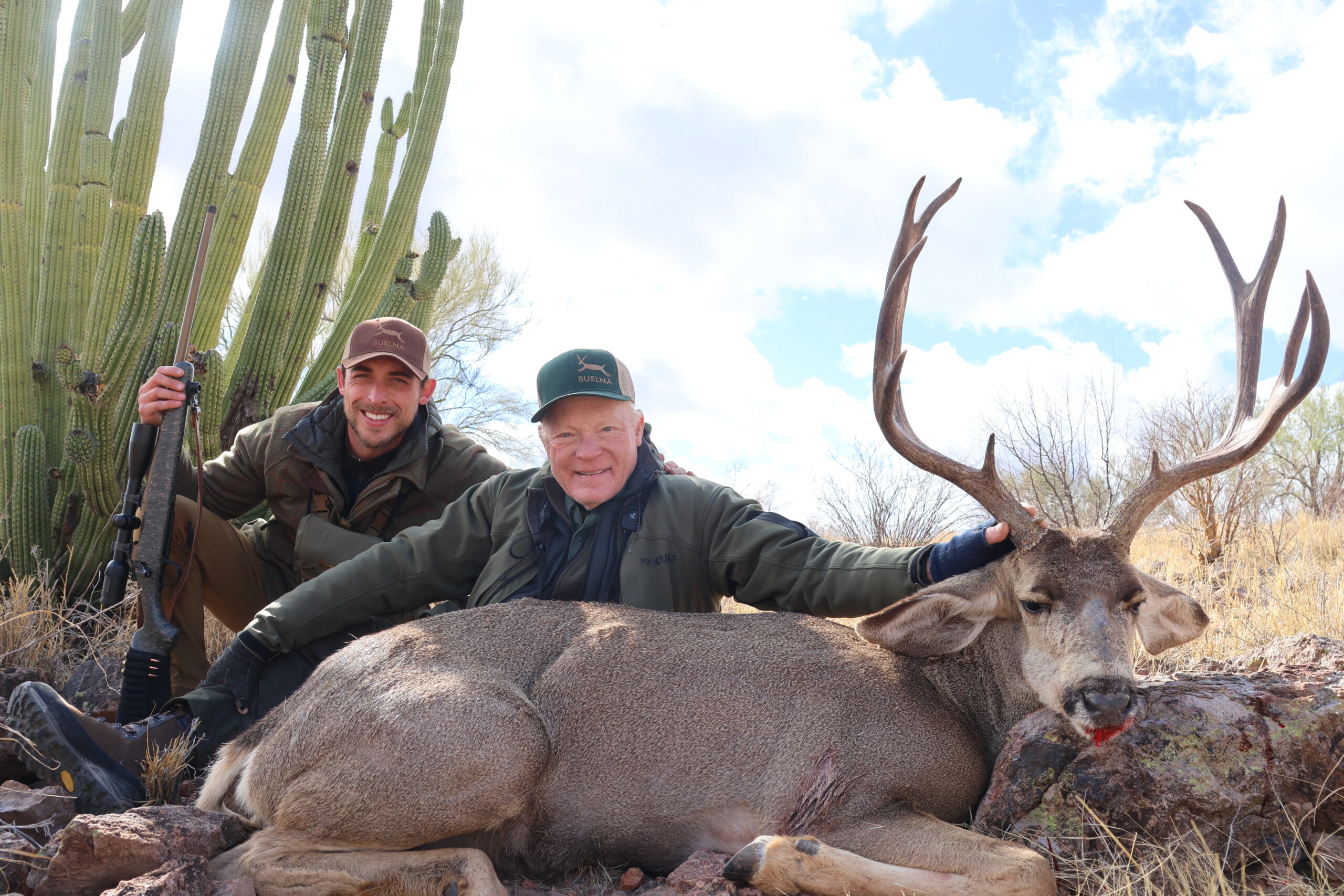It was 1997 when a fellow member of the Iowa SCI Chapter told me about his Colorado mountain goat hunt he had done as a do-it-yourself hunt the previous year. He said all you need to do is request the sheep/goat hunt brochure from the state each January, send in your check with the paper application for $500 and, after two years, you should draw the tag in your third year. At that stage in my career it sounded like a great adventure and at a reasonable cost to boot. That started what has become a very enjoyable winter pastime for me — applying in Western U.S. states for coveted draw tags.
While that Colorado goat tag was the latest tag I have drawn, there have also been mule deer tags in Nevada and Arizona, archery elk in Arizona and a bighorn tag in Wyoming in 2015. I've heard of others getting lucky and drawing without maximum preference points, but that has hardly been my case.
For the Colorado goat, there were many years when my odds were getting worse even though I had the maximum points just because more applicants were joining the draw. In fact, I now feel that I probably would not have started applying in all of these states 19 years ago had I known how much the fees were going to escalate. Heck, for the amount put out in licenses and buying preference points I could have done a guided hunt or purchased a landowner tag every other year. But I continue to be roped in.
March of 2016 came around and that Colorado hunt guide came again. Since applying for the desert sheep tag was a no brainer, I got out my pen and with maximum goat points figured I might as well try again, even though the tag is now more than $2,000 and both my wife and I have goats from Alaska and B.C. respectively. Sure enough, that April I received the notice of “successful” when looking up the draw results on the very first day they were available. Wahoo! I get to get in mountain shape again.
Colorado has a lot of goats and manages them well for hunting opportunities. In fact, my unit had an estimated population of 150 goats, and they give out 30 tags. It’s kind of a quantity over quality thing as only a few 9-inch-plus goats are taken each year. They have enough goats in certain areas that they are even encouraging nanny harvest in many units. But Colorado also has lots of other things, such as tourists, hikers, bikers and backpackers. A couple of units are even limited to weekday-only hunting to avoid congestion. I learned that the Maroon Bells Wilderness outside of Aspen was one area frequented by many of those other outdoor enthusiasts.
My first thoughts were of doing this hunt by myself, but I mentioned that I had drawn a tag to our incoming Iowa SCI Chapter President and that it would be great if he could join me. Being the super nice guy that he is, A. Jay Winter called me a couple weeks later and said he would like to join on the adventure and asked what he needed to bring. Of course, I said a backpack and a tent, but not to worry, we wouldn't be hiking far and it is all downhill.
On September 10th A. Jay drove from Iowa to Snowmass to join me as I had been chasing mule deer with a stick and string on an adjacent unit. That week of climatizing and getting used to my altitude medicine was a big benefit for me, but A. Jay didn’t get that added luxury, and I wasn't very nice in that we got going early the very next morning in order to get up to the Maroon Bells parking area before they closed off the road to cars and made all visitors take the bus from Aspen Highlands. Did I mention there were lots of people?
Packing in with five days of supplies and a rifle sticking out of my pack got us a number of inquiries and comments. Some looked at our heavy packs and asked if we were headed the 45 miles to Crested Butte. Others were inquisitive as to what we were hunting. We even got comments about how it would be neat to get all their meat for the year by hunting it themselves. That was not really what I expected around Aspen, but it was nice to hear some positive comments about our activity.
On the five-mile hike from 8,500-feet elevation to 12,000-feet, we must have passed 200 hikers, backpackers, runners and even a couple of other hunters. One hunter had harvested a young mountain goat and another who had taken his first buck with a traditional longbow. That young man was justifiably pumped and was quite fun to talk with.
The stops to visit with others were very enjoyable. They gave us a chance to catch our breath and enjoy the wonderful scenery. This is a beautiful area in early September with mountain peaks reaching to the blue sky, puffy white clouds reflected in the lake waters, with patches of snow up high that contrast with the golden aspens along the lower trail.
It was only a few miles into our hike when A. Jay (Mr. Observant) noticed two billys coming down off of a snow field. We pulled out the glass and determined that one of the two was respectable and we would have to keep him in mind.
We made it to a point where the trail split with each direction leading up over a different pass and figured that was a good place to camp as we had received information about goats being over both passes. As I had promised A. Jay a nap each day, he decided that even though it was 4:00 p.m., he would rest while I climbed up one of the passes.
From the Buckskin Pass I saw a couple of goats back down the valley and assumed they were the ones we had seen earlier. After sunset I headed down to camp and noticed that A. Jay had the tent flap open but was not out walking around. When I got close, A. Jay came out and motioned to the rocks above camp. There, just 350 yards away, were three goats he had been watching from inside the tent.
We learned that it was a mineral lick as the nanny, kid and young billy were taking turns putting their head into a crack in the rock face. Not bad, five goats seen, and we hadn't started hunting yet.
The next morning, we headed up over Willow Pass as I had not seen anything on the other side of Buckskin Pass the night before. With one last look at the three goats that were back at the mineral lick, we gathered our water bottles and some lunch and continued the upward trek to the 12,500-foot pass.
As A. Jay (Mr. Photographer) already had a number of photos of me hiking ahead of him I thought it would be good to get a photo of him as he reached the top of the pass. I got out my camera and set up a photo shot with mountains behind him and waited for him to arrive. The fluffy white clouds floating across a very blue sky with the mountains in the distance was going to make a great backdrop.
When he reached the top, he wouldn't stand still and insisted that I look behind me. Sure enough, just a half mile down into a basin was a single goat. Its white coat stood out against a reddish-brown backdrop of fairly flat terrain below us. Pulling out the spotting scope we were able see what looked like a billy slowly grazing toward the base of a steep ridge.
With it being only the second day out, I was not real sure that I was ready to pull the trigger. Heck, for that matter I wasn't sure if I was out to pull the trigger at all on this trip as both my wife and I had been lucky enough to harvest 9-inch +/- goats in the past, and this area wasn't known for goats of that caliber. But as we were there with a tag in my pocket, I figured we best get down there and take a closer look.
The goat ignored us coming off the pass and, once down to his level, we found we could approach him from behind a hill. I eased to the top of the hill crawling the last few feet moving the spotting scope ahead of me. The goat continued grazing as he started up the ridge from 300 yards away. He looked good with a white full coat and beard, distinct pantaloons, black glands at the base of the horns and horns longer than his ears. Even before we snapped off a whole bunch of photos, I was thinking I had better not pass this one up.
Leaving A. Jay on the hill, I dropped back down and moved to another hill that got me within two hundred fifty-yards. The goat was moving up from the base of the mountain so I wasted no time in setting up on my backpack for the shot. While the first shot dropped him, I have to admit that wasn't the last one. Such has been my luck with my .300 Weatherby on these very white, obvious targets. I must get a little overconfident or something and don't get a solid shot off. Just my luck to have A. Jay filming it all on his cell phone from the other hill so I could not even fib on shooting more than once.
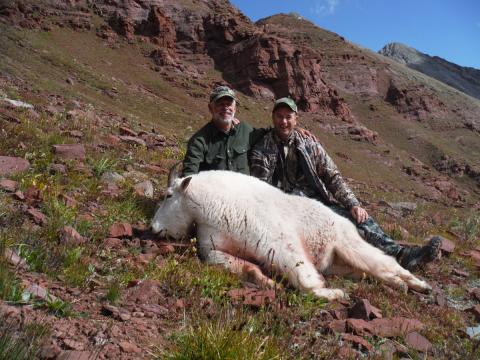
A short roll down the hill with no broken horns and a final kick preceded the realization that we had our billy, and with that the rush of mixed feelings that come with taking such a grand animal in such a beautiful setting. Remorse, jubilation, relief and joy rush in all within a matter of seconds.
It was early enough in the day that we didn't have to rush the camera session or the caping and de-boning. What a pleasure to be high in the mountains on a fall day experiencing blue skies, a high-altitude lake below us and purple mountains all around. We were also admittedly happy that we were not going to have to take off after the seven other goats we now saw on top of another mountain more than three miles away. Here's where hunting with a buddy who is younger than you makes sense as we loaded up the meat in A. Jays pack and the cape in mine for our trek back over the pass and down to our camp. It was also nice to make this trek in daylight with the setting sun and Maroon Bell mountains all around us.
We spent another night in the tent trying to eat as much food as possible so that we wouldn't have to carry it back down the next day. Our third day started at dawn with our first five-mile hike down to the vehicle with the meat, cape and some gear. The packs were heavy, so we took our time, but we were able to make the car by 11:00 a.m.
After running into town to pick up some ice for the meat and cape, we started our return hike back up to camp around 1:00 p.m. Going back up light was nice, but not necessarily much faster. We arrived at our camp to some rain and sleet at 4:00 p.m. It was not weather we really wanted to sit around and cook dinner in.
We looked at each other and both had the same thought. Could we pack up camp and make it back down again before it got too dark? That would make 15 miles in one day, which I must admit to not having done for a number of years. Would exhaustion slow me down to where we would be stumbling over the rocky trail in the rain and pitch black? The thought of a hotel room with a comfortable bed won out and provided motivation to keep us moving. We arrived back at the vehicle again well after sunset but before total darkness. A forty-minute drive with a stop for dinner got us to a motel and a great night’s sleep.
The next day started with a trip to the Colorado Division of Fish, Parks and Wildlife to get the goat registered before we hit the road for a 14-hour drive home to Iowa. At registration, we learned that the goat was 8 7/8 inches, 8 years old and the largest goat that had been registered at that office yet that year. Certainly, one to be proud of.
This do-it-yourself hunt with a good friend will always stand out as special. But then, I guess they all do in some way. Special thanks go out to A. Jay for all the assistance in carrying the heavy loads and making the whole experience all the more enjoyable.–Steve Skold

